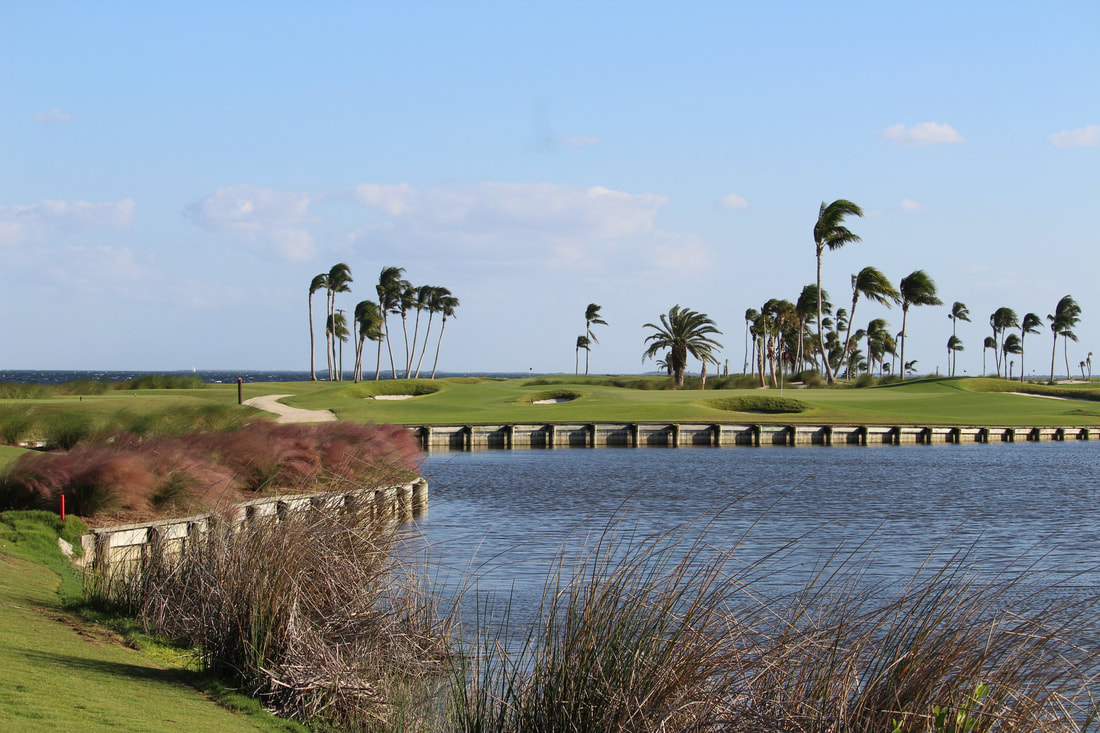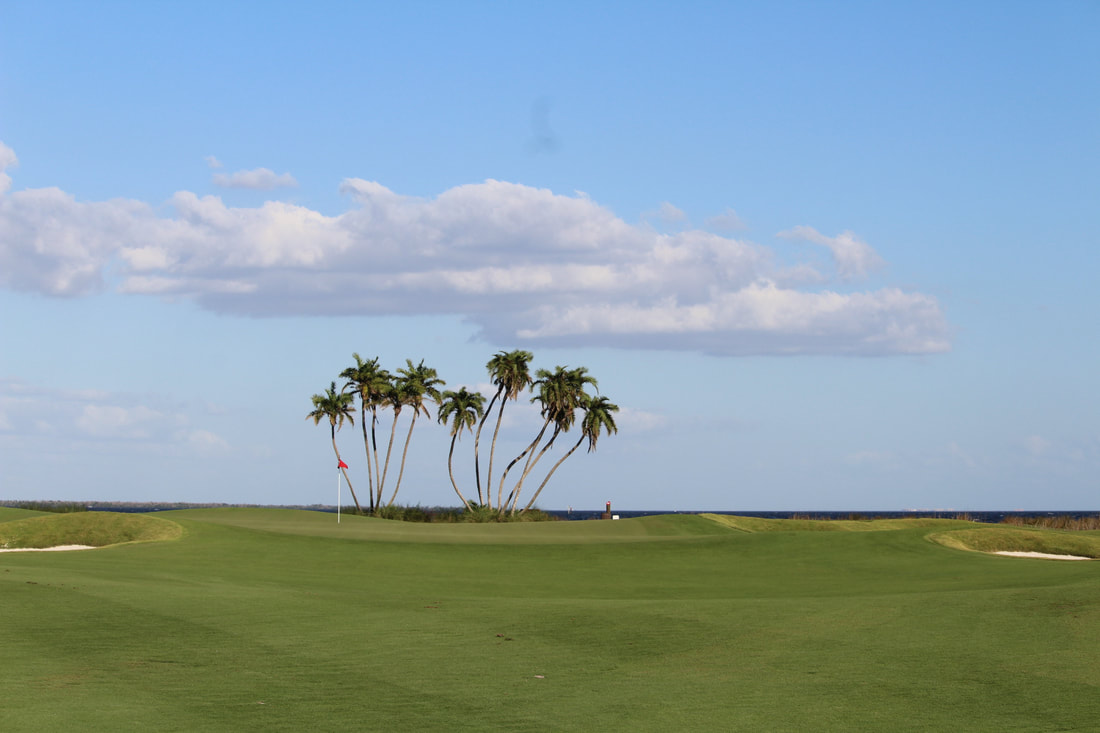Tripp Davis Completes Restoration on The Gasparilla Golf Club at The Gasparilla Inn & Club1/31/2024 Alex Elias Originally scheduled for the Summer of 2024, Tripp Davis' restoration project at The Gasparilla Golf Club at The Gasparilla Inn & Club (Boca Grande, Florida) was accelerated due to Hurricane Ian. Having first visited in April 2022, Davis had the opportunity to see the course prior to its decimation by the Category 5 Hurricane. Davis said, "My Wife and I went down and stayed a few days and I got to play it twice, on top of touring it with the Golf Course Superintendent Elliot Garrison. The course is in a beautiful setting with five holes playing along Charlotte Harbor – the big body of water inside the outer islands on the west coast of Florida south of Sarasota and north of Naples. The course is on a relatively small piece of land, but Pete [Dye] fit the holes in a way it does not feel too tight. There was a course on the same ground, originally built in 1933, but Pete moved somethings around. You could see Pete's style for sure, but over time since he did his work, there had been a lot of change. The bunkers had been changed so the grass faces had been laid down, the sand had been raised, and you could see the greens were smaller. The fact that it would be somewhat of a 'restoration' made it exciting to think about." As Davis mentioned Pete Dye’s style, the restoration project comes nine years after Davis restored Oak Tree National, designed by Pete Dye in 1975, and currently ranked 66th in the U.S. by Golf Digest. Speaking on Dye's designs, Davis said, “I was fortunate to play a lot of competitive golf on Pete’s courses. Pete’s style was certainly unique, and at times included a lot of earth movement and unique shaping. His courses tended to be visually intimidating, leading to the thought he was very much a penal type of designer. But I think his designs are typically misunderstood." "The options he regularly created, including more conservative lines of play, with a lot of strategic interest, is what I have found over the years of playing on and now working on his designs. As innovative as some think his style was, he was equally innovative with his strategic substance and how it took study to understand. He offered an aggressive line of play with most every shot, having small margins for error, and with most every shot on every one of his courses I have played or worked on there is a conservative line or shot option that offers a relatively wider margin for error. He highlighted and brought attention, visually, to the more aggressive lines of play, while the conservative route was often not as evident, often because it was not always directly wide right or left of the more aggressive line, but short of or at times long of," said Davis. Describing the restoration in great detail, Davis said, "I enlarged most every green and with most every green I shifted the location slightly to fit the strategic intent in a modern way. I took most of the greens and turned them a little to provide more angles into to enlarged parts of the greens – creating some new, tougher, hole locations. I had all of the greens mapped with 0.1' contours so I could see what the original intent was in detail. They were built to work with much slower greens than we expected we would have now, so I modified contours in places, using the mapping to move the contours to where we may have shifted the green location." Davis continued, "We did significantly move #1, #4, #8, #16, and especially #18, which we moved back 25 yards. With these greens I redesigned them with Pete’s basic approach in mind. The bunkers were rebuilt to have good liners, better drainage, and we restored the steeper grass face style. About 1/4th of the bunkers stayed pretty much where they were, half of the current bunkers were subtle changes mainly to push them further from tees, and 1/4th are new. We also removed 10 bunkers. The intent with the bunker work was clearly to bring them more into play for better players on more aggressive lines of play, while clearly creating more room for the average to higher handicap player so they have conservative options with wider margins for error."
With the intention to modernize how the course plays, Davis said, "The game has evolved, not only in how the best players play, but there are now a good many more different types of players – more Women play, more Senior Men and more older Senior Men, more beginners, more that play but less frequently, etc.. Pete's basic design intent at Gasparilla was to create a visually interesting golf experience that requires thought. We worked with his original design as the foundation of how we adapted the course for modern players to enjoy experiencing a Pete Dye design. That is most often found in a lot of subtle things like tee placements, strategic width of fairways, the demands of missing a green, more less stringent hole locations (along with more stringent hole locations). If you played Gasparilla before, you would likely not notice a significant difference, but it is there, from restoration of the bunker style, larger greens with a somewhat greater variety of hole locations, slightly different angles into greens, bunkers relocated slightly, etc." Reflecting on how he modernized how the course plays, Davis said, "I would also say that I saw some opportunities to do things Pete may have done had he done this project himself, which was really interesting for me. The change at #1 green, adding some tees well right on #14, pushing the green back on #18 to make it a stronger finishing hole (which he may not have been able to do originally). His original design intent was largely intact as I found it, only maybe with a different style in places and greens that were smaller, so we retained most it, enhanced it as it made sense. There is not one thing I wanted to restore from what was there as I found it, but I would say it was doing some things I think he would have done today."
0 Comments
|
Archives
April 2024
|
Proudly powered by Weebly


